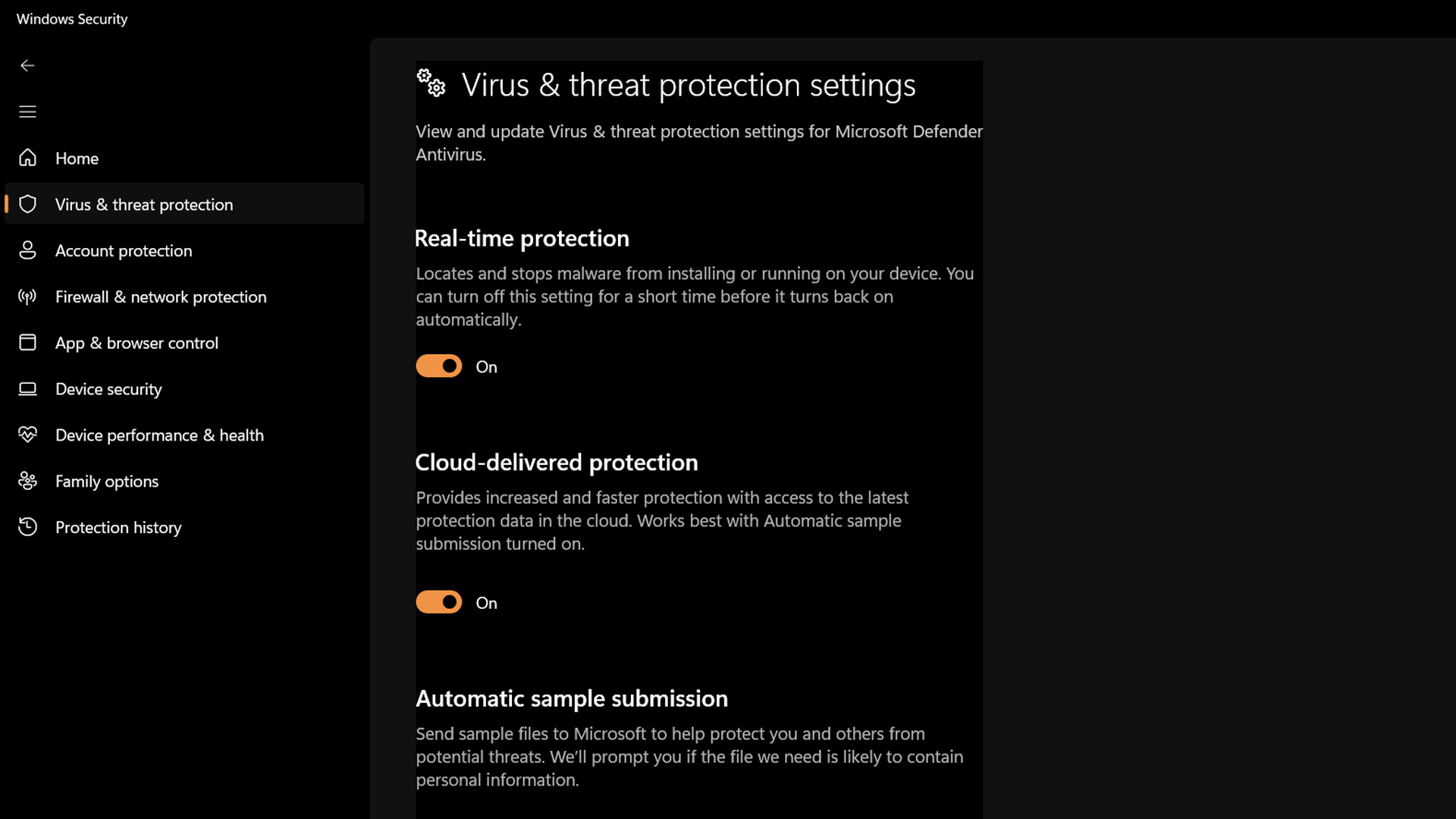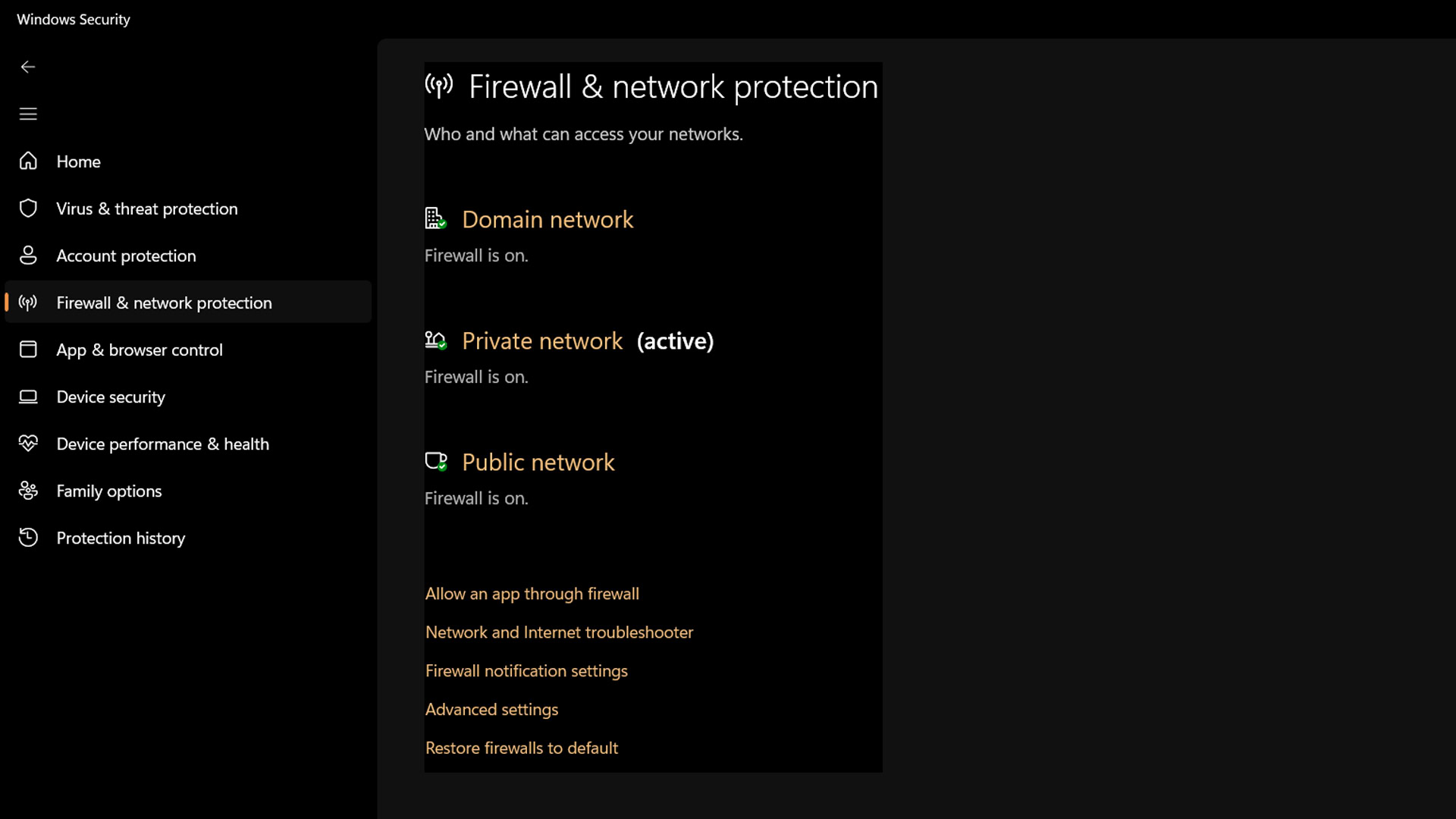Affiliate links on Android Authority may earn us a commission. Learn more.
How to disable Microsoft Defender on Windows 11
Published onDecember 26, 2023
Microsoft Defender is Windows 11’s built-in antivirus software. As a rule, we recommend leaving it active — it’s rarely going to interfere with anything, and as a part of Windows Security, it can not only protect against threats but identify potential vulnerabilities. If you absolutely need to disable Defender, though, here’s how to do it, either temporarily or permanently.
QUICK ANSWER
To temporarily stop Defender's real-time protection:
- Using the Windows search bar, search for Windows Security and open the app.
- Click Virus and threat protection.
- Under the Virus and threat protection settings header, click Manage settings.
- Toggle off Real-time protection. The feature will eventually turn back on by itself unless you have a third-party app to take its place.
JUMP TO KEY SECTIONS
How to disable Microsoft Defender on Windows 11
If you’re going to disable Defender without replacement antivirus software, you should only do it temporarily. Windows is perhaps the most frequently attacked platform due to factors like popularity and the number of potential vectors, so going online with zero protection is a recipe for disaster. That said, Defender can interfere with other apps in rare cases, so here’s how to disable it just far enough to fix or diagnose a problem.
Temporarily stopping real-time protection

- Using the Windows search bar, search for Windows Security and open the app.
- Click Virus and threat protection.
- Under the Virus and threat protection settings header, click Manage settings.
- Toggle off Real-time protection. This is the core Windows component that scans for malware (including viruses) and blocks it.
Whether you like it or not, real-time protection will turn back on automatically after a “short time,” as Microsoft puts it. This does rob you of some freedom, but the feature is just that critical to your security. In fact we’d recommend turning it back on yourself immediately after completing whatever it is that prompted turning it off in the first place.
Disabling the Defender firewall

- Using the Windows search bar, search for Windows Security and open the app.
- Click Firewall and network protection in the sidebar.
- Click Domain network, Private network, and/or Public network and toggle off Microsoft Defender Firewall in each section as needed.
Unlike real-time protection, firewall settings will stay disabled until you switch them back on. We recommend leaving as much of the firewall up as possible — especially the public network component, since that’s the most vulnerable one. If the Defender firewall is interfering with an app, it’s better to use the Firewall and network protection > Allow an app through firewall option whenever possible.
How to permanently disable Microsoft Defender on Windows 11
The only way of permanently disabling Defender’s real-time protection component is installing another antivirus app. One of the most popular options is Malwarebytes, but while its basic version is free, you’ll have to spring for a paid subscription to get full protection. There are plenty of alternative antivirus apps, most of them likewise demanding fees for a complete package.
Note that if a third-party app is missing real-time protection or has it manually disabled, Defender’s own tools will kick in again.
FAQs
Yes, unless you have another antivirus app ready to install. Windows users face serious malware threats whenever they’re online, and without real-time protection or firewall features active, there’s nothing to block malware when you encounter it. You might luck out, but it’s not worth taking the risk.
Halting real-time protection and regular file scans can technically improve performance, but the impact of those features is temporary and increasingly irrelevant. You might run into trouble if a scan starts while you’re playing a demanding 3D game, in which case you should make sure your PC has time to perform scans outside of entertainment.
You shouldn’t have to — Defender should switch off on its own, although it can’t hurt to check. As mentioned, Defender will still kick in if a third-party app isn’t providing real-time protection.